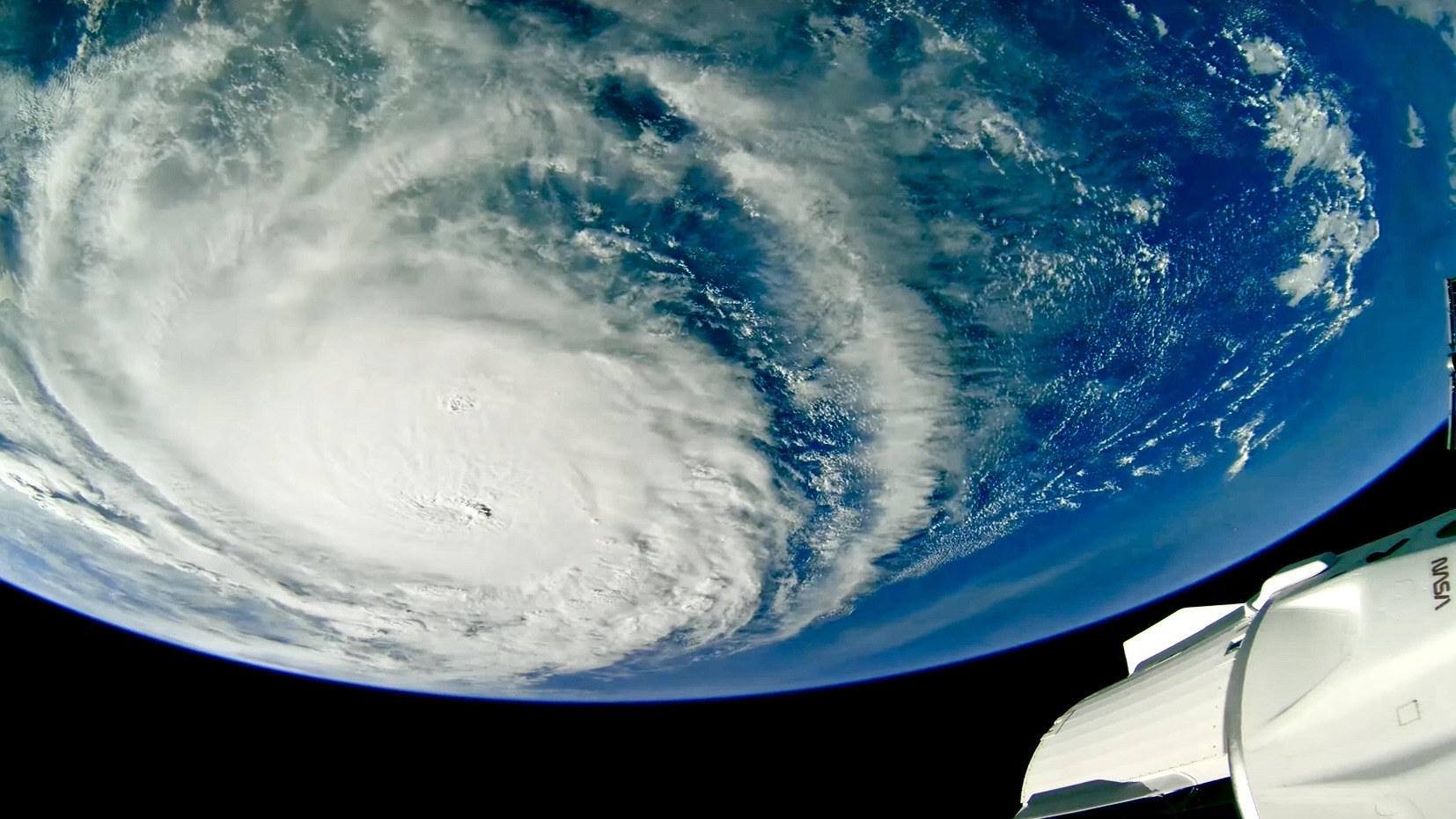Monstrous Hurricane Milton captured in 4K video by new Sen cameras on ISS

The International Space Station has been getting new equipment in the form of some 4K cameras, and the views they captured of Hurricane Milton are breathtaking.
A SpaceX cargo launch to the International Space Station (ISS) earlier this year, the CRS-30 mission, included a payload called SpaceTV-1 — a set of 4K cameras from the space video streaming company Sen to be fastened to the station's exterior. Now that the cameras have been attached to the European Space Agency's Columbus module and pointed toward Earth, they are sending back some incredible views.
Sen's goal is to have 4K livestream feeds from space available for free across the globe. "Sen uses its own satellites and hosted cameras in space to gather news and information about what’s happening on Earth and in space," the company's website states. Sen has been testing the new ISS cameras' capabilities over the past several months as it ramps up its business model, and its most recent video shows the headline-grabbing Hurricane Milton, which made landfall in Florida overnight on Wednesday (Oct. 9).
The video shows Milton as the ISS passed over the Gulf of Mexico, the storm nearly stretching across the entire visible portion of the Earth below. The stunning footage gives "additional live views to those provided by NASA's High Definition video cameras already on the space station," a Sen press release says.
Related: Hurricane Milton bears down on Florida with Category 5 strength in new ISS footage (video)

The company's website features videos from the past several months taken from the ISS, as well as videos from a Sen satellite launched in 2019. The 4K content is also available through the company's YouTube channel, as well as a dedicated iOs app and forthcoming Android app.
"All videos will be free to the consumer to view, supporting by advertising, and then there will be subscription services for consumers, businesses and government agencies (such as those monitoring the environment who want access to our data for their analytics models)," Sen CEO and founder Charles Black told Space.com.
Breaking space news, the latest updates on rocket launches, skywatching events and more!
"Sen hopes its 4K livestream of Earth will be accessed over time by billions of people, empowering everyone with live views of our planet to inform, educate, inspire and benefit humanity," the company said in a press release. Though its continous ISS livestream has yet to officially begin, Sen has been leaving the cameras on as much as possible.
"Sen's new 4K livestream is available for over 20 hours per day, with just a few hours a day of expected downtime due to routine loss of signal communications with the inter-satellite link relaying the video data to the ground," the release says.

Josh Dinner is the Staff Writer for Spaceflight at Space.com. He is a writer and photographer with a passion for science and space exploration, and has been working the space beat since 2016. Josh has covered the evolution of NASA's commercial spaceflight partnerships and crewed missions from the Space Coast, as well as NASA science missions and more. He also enjoys building 1:144-scale model rockets and human-flown spacecraft. Find some of Josh's launch photography on Instagram and his website, and follow him on X, where he mostly posts in haiku.
